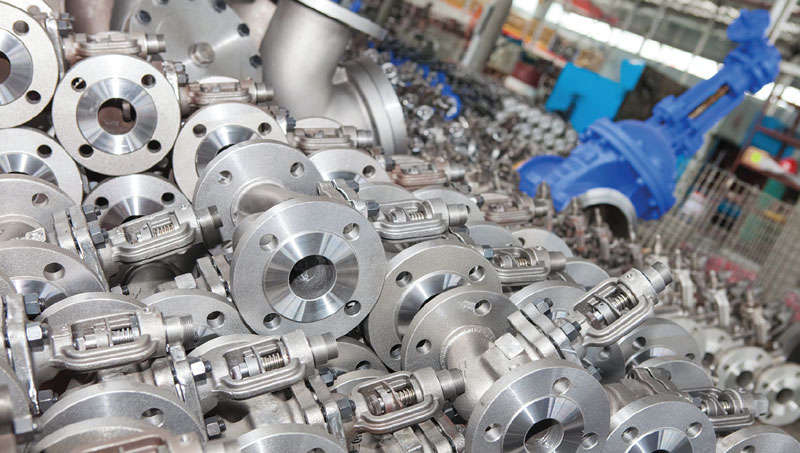AM program for engineering design, purchase, installation
By Mr. Alireza Aslarabi Sardroudi
Continuing his column, Mr Alireza Aslarabi Sardroudi turns his attention to how to develop an asset management program for engineering, design, purchase and installation of industrial valves.
In previous articles, we defined the duration of an asset and its generalities. We also explained the issue of manufacturing valves in the factory with the asset management model. Obviously, these valves will be used in industrial projects or infrastructure facilities. Selecting them for use in a project is a systematic process. As standard, a design and construction project consists of three stages: (i) feasibility studies, (ii) feed studies, (iii) EPC project. We need to see how asset management helps to select a valve for use in a project according to the last step.
Buying/ordering valves
First let us overview important issues to consider when buying or ordering valves for an engineering design project. Generally, the issues considered by a project’s design engineers can be examined from two aspects: (i) technical and technical aspects, (ii) economic and cost aspects. These two issues certainly apply to valves; both when ordering/choosing a standard valve in addition to technical issues and materials selection that may be required with special standards. The issue of cost is also very important. This cost is firstly the cost of purchase and installation and secondly any costs during the valve’s entire life cycle. For example, operating, maintenance and removal costs, which, if chosen correctly, will cover both EPC costs and O&M costs and scrapping. Unfortunately, most EPC executives only think about the initial costs, ie the cost of purchase and installation and are less forward-looking. In consequence, quality is not considered commensurate with the longevity of a valve. The quality of an industrial valve manifests itself during the life cycle. But sometimes, due to low quality, a malfunctioning valve imposes high costs on the owners of industrial or infrastructure facilities. Nowadays, physical asset management helps in making the right choice during the life cycle of an industrial valve.
Valves are specified based on feed studies and operational processes as well as relevant standards, type, size and materials of an industrial valve. Specified valves are then matched with the size, type and materials of factory-made valves in the list of manufacturers. Even if the valve is in the lists, a purchase order is placed and the valve made or delivered from the manufac-turer’s warehouse under the supervision of the employer’s technical inspectors. But even if the design in the EPC project is not in the list of manufacturers, the factory will design and build a single product for the EPC project based on the required specifications. Of course, at this stage, economic studies are the criterion for selecting or ordering, even with the best quality and lowest cost. However, it should be noted that if there is no strict supervision by the employer, the EPC contractor may incur quality problems during operation and maintenance. The asset management model considers the entire life cycle at the time of selection, albeit with a questionnaire, and requires the EPC contractor to anticipate and ad-dress all future problems in advance, even if that entails additional costs.
- Determining valves’ operational readiness
Considering that a high level of operation for continuous production is a key requirement for process facility owners, it is imperative to determine and ensure the high operational readiness of industrial valves in a specific life cycle. This is done during engineering design, installation and commissioning, with two solutions being to consider redundant valves and valves whose failure rates are almost zero. The quality of a valve is very crucial at this stage. - Process and valve safety management
The safety of the production process or service is very closely related to the safety of the device itself (especially the valve). Considering all the risks of failure leading to safety accidents and choosing a valve with less risk is important at this stage. At this stage, quality and safety control equipment on the valve play a key role. - Operation management design, programs and instructions
Easy to use in full accordance with the standards of operation, programs and instructions for visiting and testing the operation, normal and emergency start-up and stop, emergency evacuation, convenient location in terms of ease of operation and remote (smart) operation are the topic of this section. - Design of maintenance management, programs and instructions
Designing and compiling standard pro-grams and instructions for various types of maintenance and repair of industrial valves, including breakdown, preventive, predictive, technical inspection and overhaul, are important issues in this section, which should be acted upon after com-missioning. - Design of operational and maintenance reliability management
Designing patterns and methods of operational reliability and maintenance are performed during EPC and will be responsible for improving the operation and maintenance of valves after com-missioning of the facility. In other words, reliability management during operation and maintenance is a continuation of the reliability designed during EPC. - Attracting human resources, training
Manpower must be recruited, trained and empowered during the EPC. Man-power must be fully acquainted with the processes of operation management, technical inspection and maintenance of industrial valves. Skilled and trained personnel will easily work with instructions and solve problems after commissioning. This issue, if not taken into account at the time of EPC, will be accompanied by trial and error at launch time and will increase risks and costs. - Production management and facilities management systems
Creating a management system for the production and management of facilities, which is generally software and hardware, is done during EPC. This system helps the facility to store and circulate its data and information in both operational and headquarters sections. Usually, these systems first store the identification and documentation of equipment and devices, including manuals, drawings and practical instructions. Later, the system should timely record issues associated with production, maintenance, repairs, logistics, warehouse, etc.. This data should be available to users and kept updated. This system should also be implemented for industrial valves. - Procurement, support and supply chain management
Procurement and supply chain of valves is very important for an EPC project. Timely supply of items for installation and spare parts for the start-up stages is a routine issue of any project. But what is more important is to design a continuous support system for spare parts and consumables for the future, especially the period of operation and maintenance. These items are usually needed to ensure the correct functioning of the valves. If the standard of spare and consumables is well defined in the EPC period, we will have fewer problems through the operation and maintenance of the valves.
To be continued…….
 About the author
About the author
Mr. Alireza Aslarabi Sardroudi is an expert In physical asset management. Based in Tehran, Iran, Mr. Sardroudi can be reached on: aslearabi@yahoo.com
Mr. Sardroudi has planned seven articles about asset management of valves, as follows:
1: Introduction and overview
2: Requirements of an asset management system for valves
3: Asset management plan for the manufacture of valves
4: Asset management plan for engineering, design and installation
5: Asset management plan for valves during operation
6: Asset management plan for decommissioning valves
7: Valve asset management assessment and auditing


